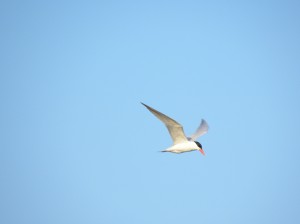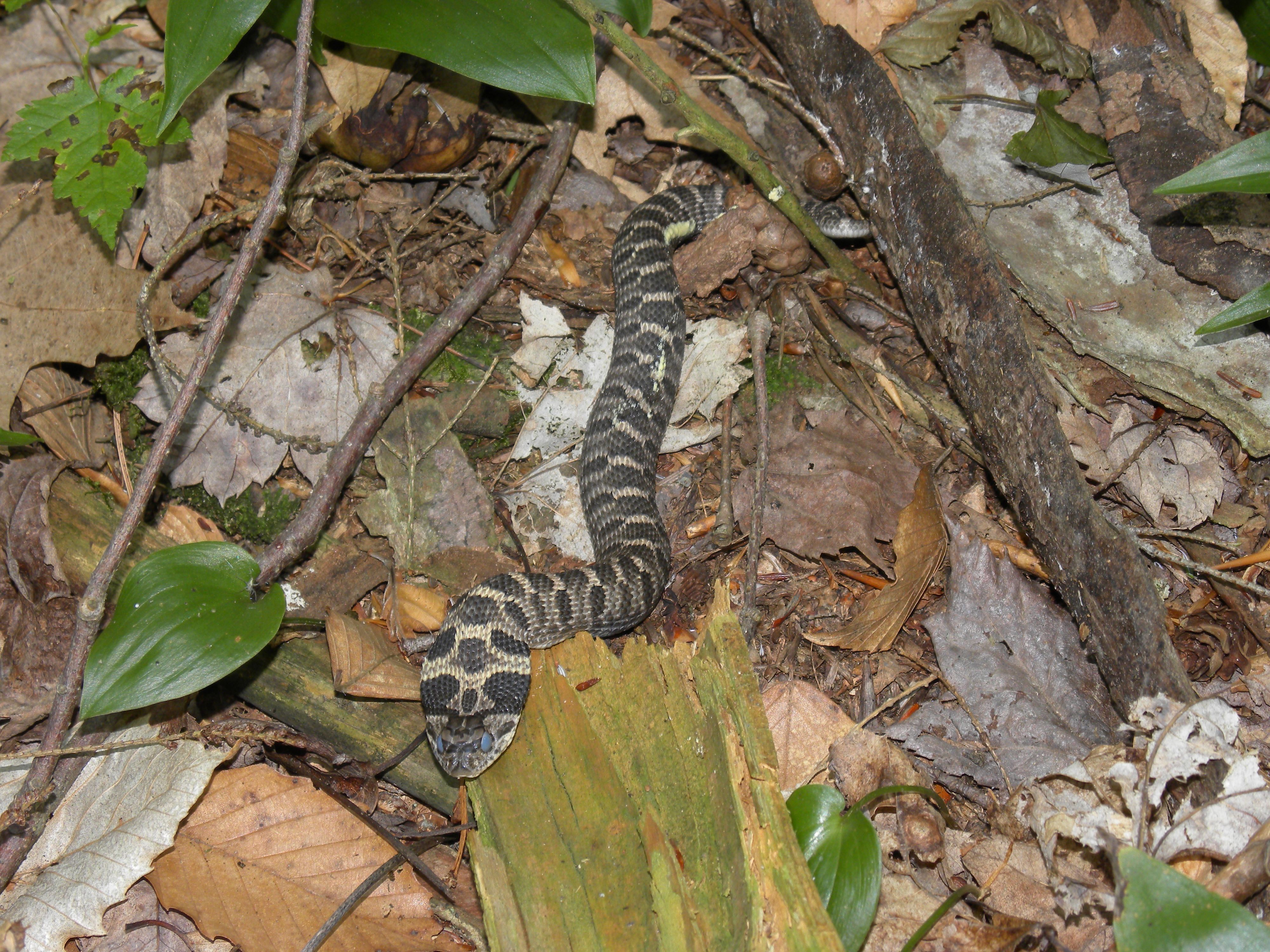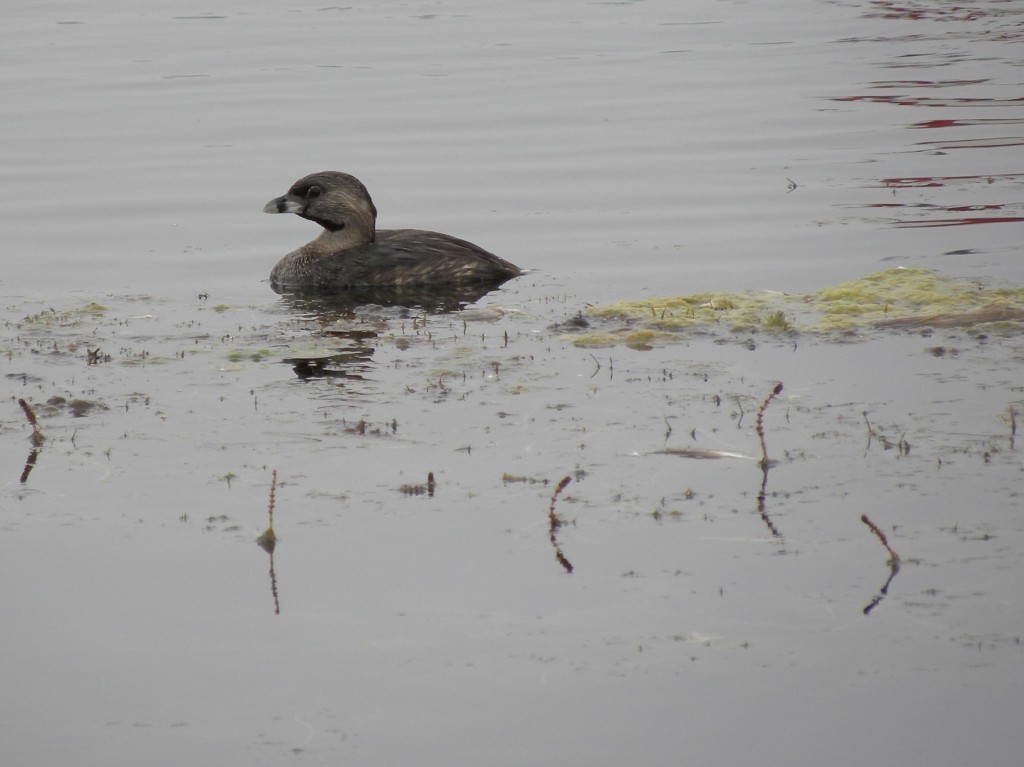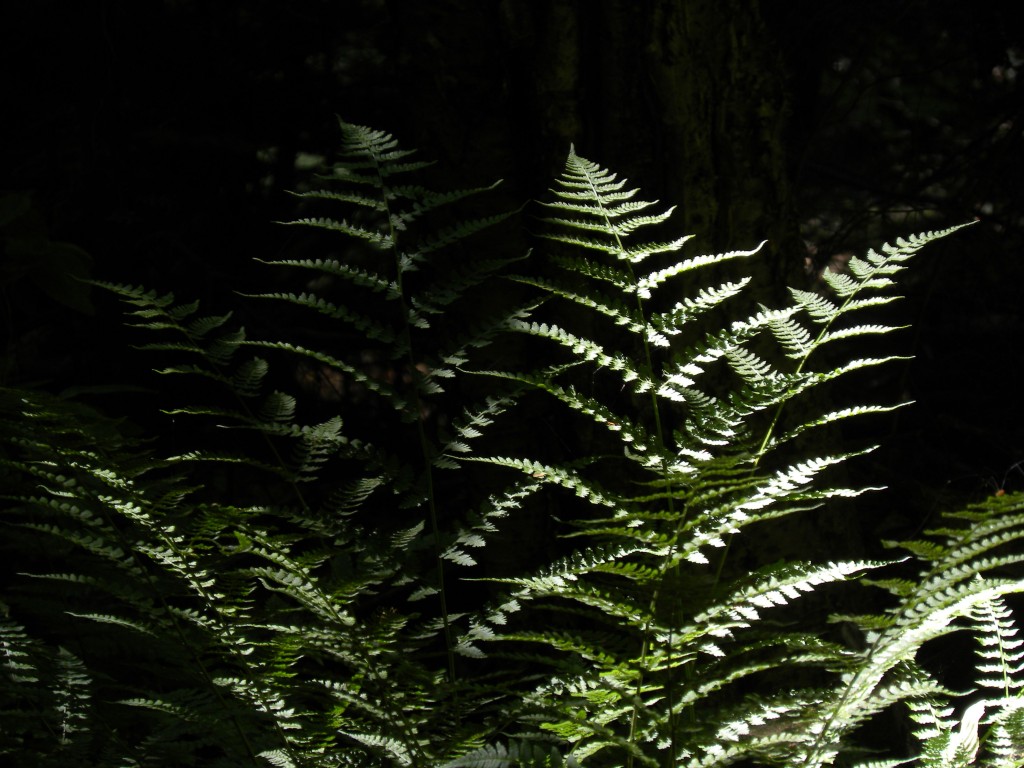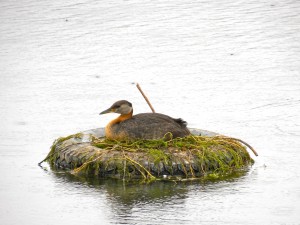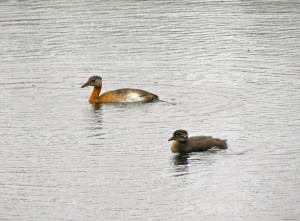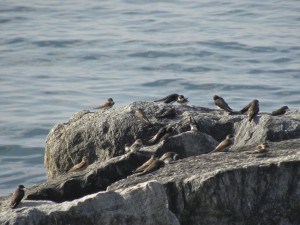July 18 2012. One of the best ways to see lots of birds is to not move. By that I don’t mean stay at home and watch T.V. I mean get out of the house, go somewhere with a mix of habitat, get comfortable, sit, stay, and watch.
After a scorchingly hot few days I needed to stretch my legs and went looking for migrant shorebirds. I ended up at a convenient lookout elevated over a cattail marsh with a vista across a sluggish creek to a small island, a large expanse of mudflats and another large body of water beyond; all of this surrounded by hardwood forests. I sat for nearly three hours; just watching! The weather was perfect, a light breeze and hazy cloud and many avian mini-dramas unfolding. I made a lot of field notes here’s what I wrote:
“Herring Gull wrestling with a dead (?) catfish or perhaps a carp. Struggling, tugging and occasionally recoiling, but it’s a meal. Its cry reminds me of an Atlantic harbour.
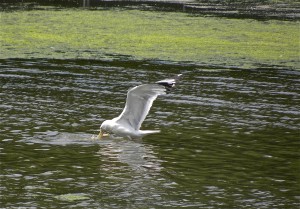
“Hearing a distant Swamp Sparrow stridently chiming at the edge of the marsh, and far off across the creek, a Marsh Wren chattering.
“A flock of 15 Lesser Yellowlegs found marching across the mudflats, every now and then they pick up and move fifty yards, their long legs trailing in brief flights.
“Scattered Least Sandpipers skittering and picking at the mud, lots of them but individuals, not in flocks.
“A Caspian Tern has caught a fish that’s way too big to eat easily, but too good to give up. It keeps looking up and back fearing losing the fish to a marauding gull or even another Caspian. It has a legs-astride stance as it struggles to control the meal and stay alert.
“A Great Egret swoops in low. Slow in flight but lands like a ballerina and stalks gracefully, picking up each foot slowly and carefully. A surprise, haven’t seen one here since last summer, so Bird of the Day!
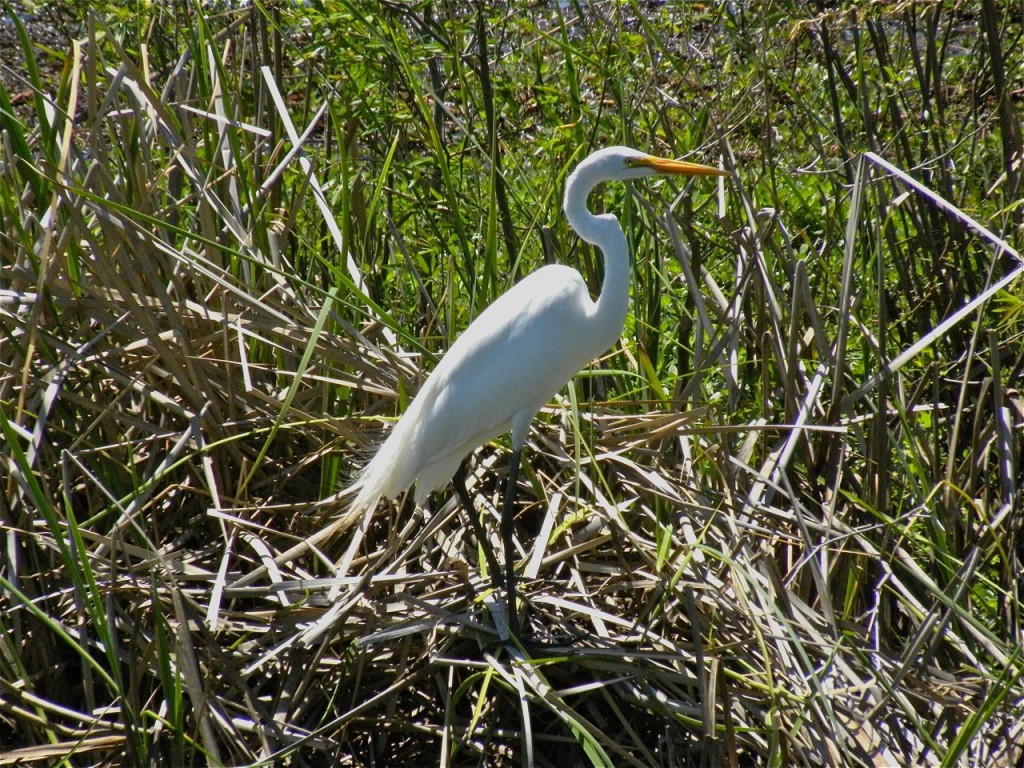
“Cautious approach of a Great Blue Heron from around the end of the island, then carefully pacing, stalking something, eyes it carefully judging distance then moves on; not edible I guess.
“Five Hooded Mergansers, a tough identification, floating low in the water almost submerged. Working together in a tight group, diving, plunging and fluttering the water. A difficult i.d; so active and colourless. Not until one eventually got up onto a rock was I sure. A learning experience, I’ve never noticed the low-in-the-water, almost submerged behaviour before. And small; maybe youngsters.
“Caspian Terns in a tight pursuit, like two sharp-winged Ws swooping high and wide against a blue sky. One making a coarse growling sound.”
And the morning also included Red-eyed Vireos calling endlessly in the forest canopy, spaced, it seems, equally about 100M apart, a Rose–breasted Grosbeak still in full colour and a couple of Woodland Turkeys trying not to be seen. Not many shorebirds as it turns out; but an endorsement of just sitting and letting the birdlife happen.
